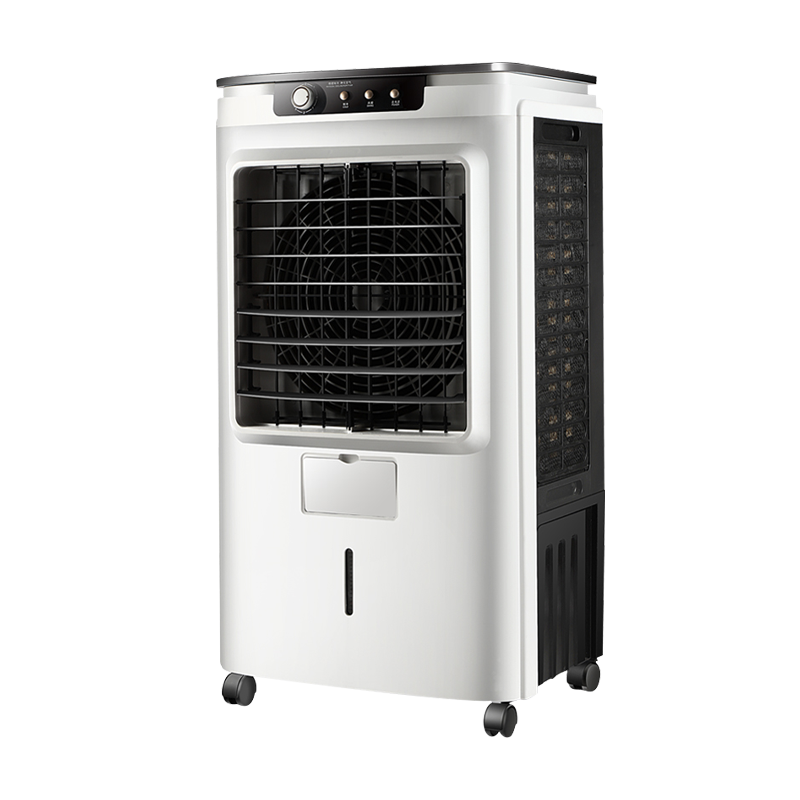With consumers increasingly concerned about home environmental health and air quality, evaporative air coolers (also known as air conditioners) are frequently asked a core question: "Is the airflow from an evaporative air cooler healthy and hygienic?" This is especially true for cooling devices involving water circulation, where users are particularly sensitive to issues such as bacterial growth and odors.
As a professional evaporative air cooler manufacturer, we will provide an in-depth analysis of the hygiene principles of evaporative air coolers, potential risks, and our countermeasures, helping you enjoy cool air with peace of mind.
Sources of Hygiene Risks in Evaporative Air Coolers: The Characteristics of Water Circulation
Evaporative air coolers utilize water evaporation for heat absorption and cooling; the water tank and evaporative cooling pad are their core components. Without proper maintenance and design, the water circulation system can indeed become a hygiene hazard:
Microbial Growth: If the water in the tank is not changed for a long time, it can easily become a breeding ground for bacteria, algae, and other microorganisms in the high temperatures of summer.
Mold and Odor: Prolonged dampness in the evaporative cooling pad, combined with adsorbed dust, can foster mold growth, causing the evaporative cooler to emit a musty or moldy smell, affecting air quality.
Secondary Dust Pollution: Dust sucked into the machine may adhere to the evaporative cooling pad and water tank, then be blown out through the air outlet, causing secondary air pollution.
Manufacturer's Response Strategy: Four Technologies to Ensure Healthy Airflow from Evaporative Coolers
To completely address users' health concerns, modern high-quality evaporative coolers have integrated multiple hygienic designs and technologies. The following are the key measures we take to ensure healthy airflow from our evaporative coolers:
1. Antibacterial Water Tank and Water Path Design
Materials Optimized: Using materials with antibacterial properties or adding antibacterial agents to the water tank inhibits bacterial growth in the water at the source.
Easy-to-Disassemble Structure: A large-diameter, removable water tank allows for thorough cleaning and wiping, preventing dirt accumulation in hard-to-reach areas.
2. High-Density Anti-Mold Evaporative Cooling Pad
Material Upgrade: The evaporative cooling pad uses high-density, highly absorbent plant fibers or environmentally friendly materials, and is treated with anti-mold technology, making it less prone to mold growth.
Rapid Drying: Some high-end evaporative cooler models feature a "drying" function. After the cooling mode is turned off, the fan continues to run for a period of time to dry the evaporative cooling pad, minimizing conditions for mold growth.
3. Multi-Function Filtration System (Primary Air Purification)
Primary Filter: A removable dust filter is installed at the air inlet to effectively filter hair, large dust particles, etc., reducing the amount of pollutants entering the water tank and evaporative cooling pad. This not only improves the hygiene of the exhaust air but also protects the machine.
4. Negative Ion/UV Sterilization Technology
Technological Enhancement: Some evaporative coolers integrate a negative ion generator to release negative ions to freshen the air; more advanced models have built-in UV ultraviolet germicidal lamps that irradiate the circulating water in the water tank to further kill bacteria in the water, ensuring that the blown-out cool air is clean and hygienic.
User Guide: Three Habits to Keep Your Evaporative Air Cooler Healthy
Even the best technology requires regular maintenance. To maximize the health and comfort of your evaporative air cooler's airflow, we recommend the following three points:
**Frequent Water Changes:** Change the water in the tank daily or every two days. Do not leave water in the tank for more than three days; this is the simplest and most effective way to prevent microbial growth.
**Regular Cleaning:** Depending on usage frequency, thoroughly clean the water tank and evaporative cooling pad at least every two weeks. Use a mild detergent and a soft cloth for cleaning.
**Dry Storage:** Before storing for the season, be sure to drain all water from the tank and thoroughly dry the evaporative cooling pad, or use the machine's "air dry" function. Ensure the inside of the machine is dry before proper storage.
With the manufacturer's high-standard design and proper user maintenance, your evaporative air cooler can continuously provide healthy, fresh air, allowing you to enjoy comfort and peace of mind during the summer.
 English
English 中文简体
中文简体 عربى
عربى Tiếng Việt
Tiếng Việt



 CONTACT US
CONTACT US